Some questions I have about these rifles. Were they in existance as early as they're Lancaster counterparts and are there any examples that date around the time of the Revolution? Also, do they have the German influences that the Lancaster guns do? Would like to know a little more about they're history. Seems like all the ones I have seen are 19th century guns. Havent seen much in the way of books about them either. Your experience is appreciated.
-
This community needs YOUR help today. We rely 100% on Supporting Memberships to fund our efforts. With the ever increasing fees of everything, we need help. We need more Supporting Members, today. Please invest back into this community. I will ship a few decals too in addition to all the account perks you get.

Sign up here: https://www.muzzleloadingforum.com/account/upgrades -
Friends, our 2nd Amendment rights are always under attack and the NRA has been a constant for decades in helping fight that fight.
We have partnered with the NRA to offer you a discount on membership and Muzzleloading Forum gets a small percentage too of each membership, so you are supporting both the NRA and us.
Use this link to sign up please; https://membership.nra.org/recruiters/join/XR045103
You are using an out of date browser. It may not display this or other websites correctly.
You should upgrade or use an alternative browser.
You should upgrade or use an alternative browser.
Lehigh Rifle History
- Thread starter makanaut
- Start date

Help Support Muzzleloading Forum:
This site may earn a commission from merchant affiliate
links, including eBay, Amazon, and others.
Stophel
75 Cal.
- Joined
- Jul 8, 2005
- Messages
- 5,949
- Reaction score
- 858
The guns that are commonly recognized as being "Lehigh" guns (curved) MAY have come into existence sometime in the 1780's. There is the "fully formed" Rupp gun dated 1793. They didn't just burst into existence, though, there seems to have been a somewhat gradual change going on, which may have speeded up dramatically at the end of the war. To see a good representative of a "Lehigh area" gun of the Revolutionary War period, one needs look no further than any of the Oerter rifles. These are from the early 1770's, and show a SLIGHT amount of curvature in the stocks...not much, though. Going back further into the 1760's you will see the famous "Christian's spring" type of guns. Some have straight wrists, most seem to have stepped wrists. The earlier you go, the more German the guns are. The German stepped wrist continued on through the later Lehigh guns. As far as "German influence", Lehigh guns have that in spades!
Guest
If you can, find a copy of Shumway's Rifles of Colonial America vol 1&2 for photos & history of early rifles from that area. As was said above the "classic" lehigh style developed in the Golden Age after the Rev War and the early guns were Germanic and commonly had straight butt lines. Really, little is known about the early period as compared to the Golden Age. Reading, Lancaster and the Christian Springs area (vic Bethlehem) were early gunmaking areas. Reading/CS by the 1750s and Lancaster perhaps somewhat earlier--some say alot earlier. Guns were no doubt made even earlier in the major coastal towns of New England and in Philly, Williamsburg (VA) and Charleston(-town)(SC); but imports were important early sources of guns. Very early records indicate rifled barrels being imported into Virginia--as early as the late 1600s. Someone was making rifles....
I had a lehigh Valley rifle made for me by Jim Correll of Weatherly Pa. It is a poor boy of the Allentown school that would have been used in pre and post rev war era. Mr. Chuck Dixon of Dixon muzzleloading shop,Inc. is a real expert on these rifles. He is a gentleman and very personible if you call him he will be glad to help you. his # is 610-756-6271. They also have a web site[url] www.dixonmizzleloading.com[/url]
I hope this helps
I hope this helps
Last edited by a moderator:
Stophel
75 Cal.
- Joined
- Jul 8, 2005
- Messages
- 5,949
- Reaction score
- 858
These are my favorite types of rifles, and I can say, that you'll have quite a time getting information/photographs of guns of this region. Even though there seem to be plenty of them, they are VERY underrepresented in the "picture books".
- Joined
- Jan 12, 2005
- Messages
- 1,147
- Reaction score
- 1,438
Lanc,
I have two very good articles on the Northampton/Lehigh rifles. Including photos of originals and details on regional styles and idiosyncracies.
I believe there is one on Eric Kettenburg's site as well.
If you give me a couple of days, possibly I can find them and make copies to send you.
I've posted a few photos on this site of one I recently built. I'll try to attach one to this message as well.
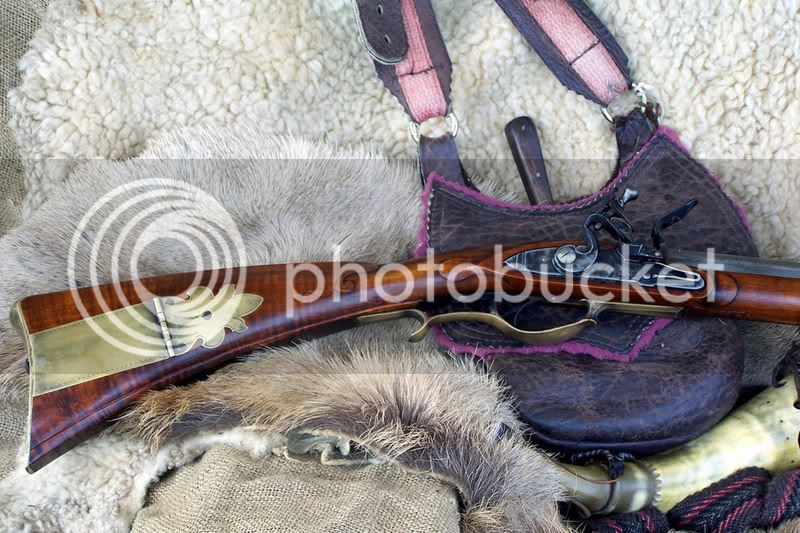
I have two very good articles on the Northampton/Lehigh rifles. Including photos of originals and details on regional styles and idiosyncracies.
I believe there is one on Eric Kettenburg's site as well.
If you give me a couple of days, possibly I can find them and make copies to send you.
I've posted a few photos on this site of one I recently built. I'll try to attach one to this message as well.

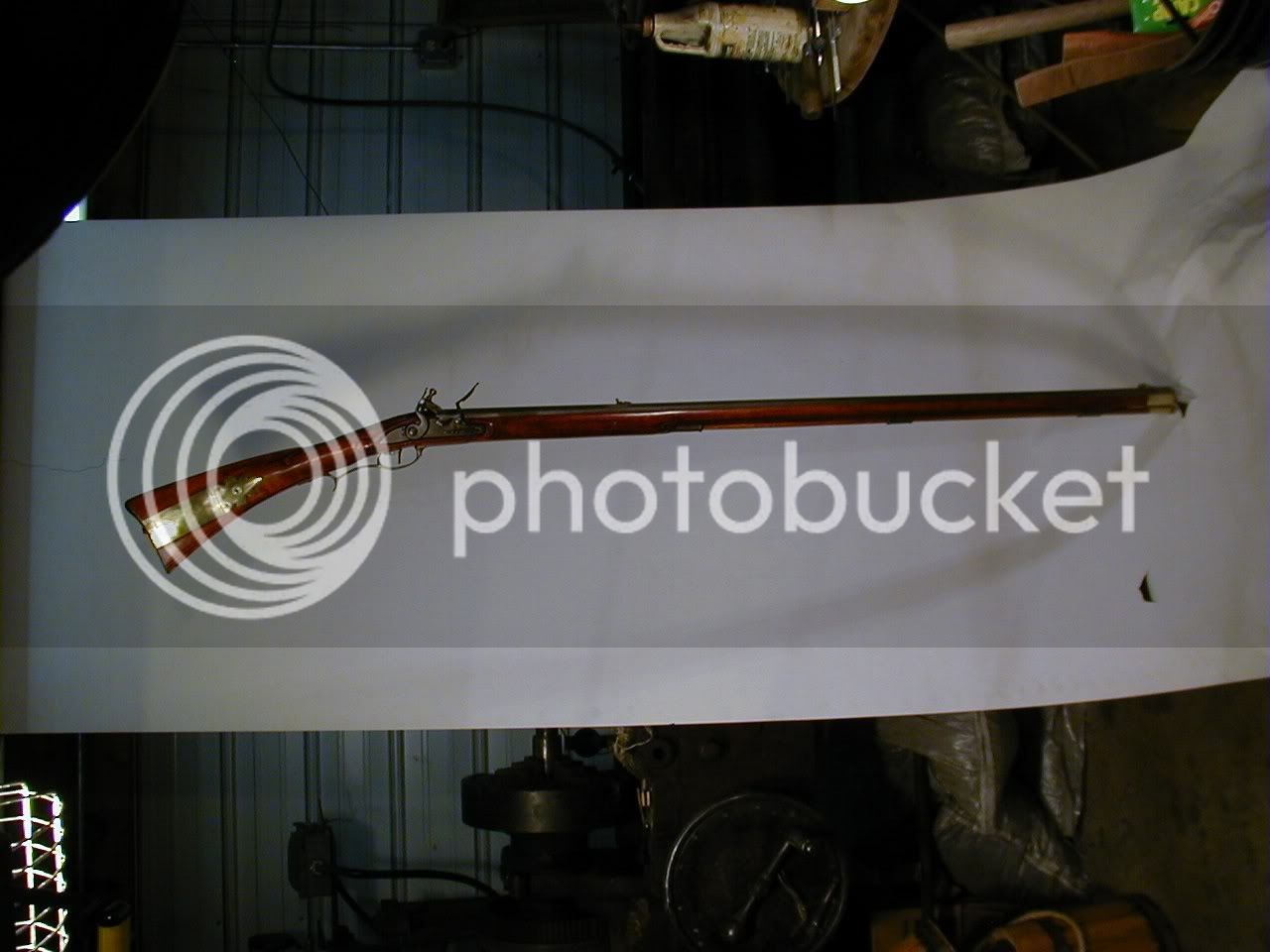
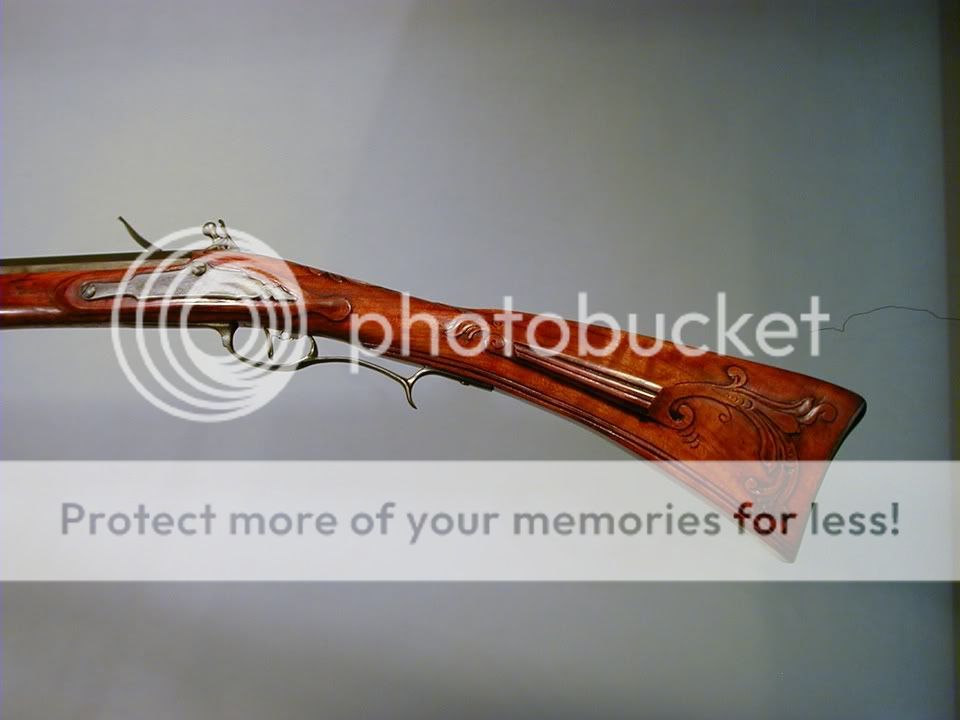
My Lehigh is a nodding rendition of a signed John Rupp that Kindig (his No. 62) describes as "undoubtedly made in the pre-Revolutionary period." The world has moved past some of Kindig's findings, but she is decidedly "clubby" (if that can be said of any Lehigh) compared to the later Lehighs of the Rupps and Moll. The lightly curved butt-plate is a full 2-1/8" wide.
It certainly fits for a Revolutionary rifle.
Guest
Here's one I made this past winter.
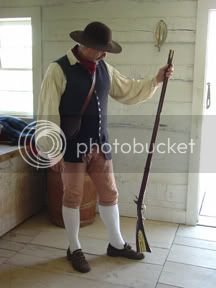
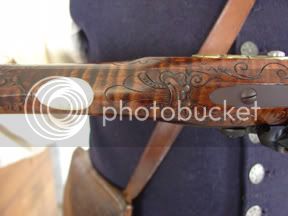
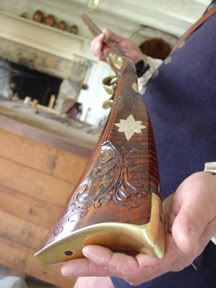
BTW, this is my shop and I dress like this everyday..normal stuff. :grin:



BTW, this is my shop and I dress like this everyday..normal stuff. :grin:
Guest
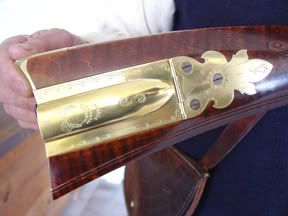
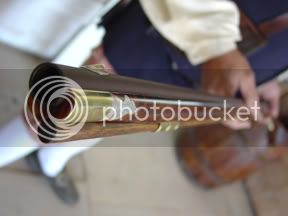
This is a Herman Rupp inspired rifle. Note the open ended nose cap. I'm beginning to really like these Lehigh rifles. I'm working on another one now.
Al Parsons
32 Cal.
- Joined
- Dec 15, 2005
- Messages
- 43
- Reaction score
- 1
Eric Kettenburg, in his[url] www.firelocks.com/[/url] website, describes Lehigh rifles in some detail. Well worth a visit.
Last edited by a moderator:
Guest
I have seen his site and he has some beautiful rifles on there. :thumbsup:
- Joined
- Jan 12, 2005
- Messages
- 1,147
- Reaction score
- 1,438
Lanc.Co,
I have made copies of the articles I told you about. If you'd send me via e-mail, your home address, I'll mail you a copy.
I have made copies of the articles I told you about. If you'd send me via e-mail, your home address, I'll mail you a copy.
ill Mendham
32 Cal.
- Joined
- Aug 2, 2005
- Messages
- 25
- Reaction score
- 0
Hey All Happy Father's Day
This is my first father's day as a pappa and I was lucky enough to get a rifle. I just ordered the John Rupp Allentown Rifle from Track of the Wolf Link Here
As you can see they clearly claim that this rifle is Revolutionary War era. Is this true?
Any other thoughts on my order? Track has a nice 10 day return policy and any tips or concerns from you all would be appreciated. I am hoping this gun lasts a good sixteen years so I can give it to my son!
This is my first father's day as a pappa and I was lucky enough to get a rifle. I just ordered the John Rupp Allentown Rifle from Track of the Wolf Link Here
As you can see they clearly claim that this rifle is Revolutionary War era. Is this true?
Any other thoughts on my order? Track has a nice 10 day return policy and any tips or concerns from you all would be appreciated. I am hoping this gun lasts a good sixteen years so I can give it to my son!
I would have to agree with Chris here. The TOW rifle is not in my opinion a pre revolutionary war rifle. It is not even a good rendition of the John Rupp rifle illustrated by Kindig{PP.175-176}The butt drop and the exaggerated roman nose comb are more like a French fusil de chasse or a late Allentown gun.The Rupp gun does't have nearly as much drop and the wrist {being wider than high} is rather clubby.This gun has a rather delicate wrist. There are pictures on this thread of a better copy. Stumpkiller's post shows such a better copy and you can see the difference in butt architecture.The butt architecture on the TOW gun is more reminiscent of later{19th century} Allentown guns.It would be highly questionable whether the styling of the TOW gun is earlier than late 18th century. This gun is a typical example of a maker not having had the exposure to old guns especially the early Lehigh Valley guns by the Molls, Rupps,and others.These are just my thoughts and opinions on this gun,you will have to make up your own mind.
Tom Patton
Tom Patton
- Joined
- Oct 2, 2004
- Messages
- 433
- Reaction score
- 97
TOW (in my opinion) are very loose in their definitions of school. You'll notice that anything with a side-opening patchbox is described as "Bucks County" or worse, "A. Verner" regardless of whether any other details are correct (or even close).
Similar threads
- Replies
- 33
- Views
- 1K




